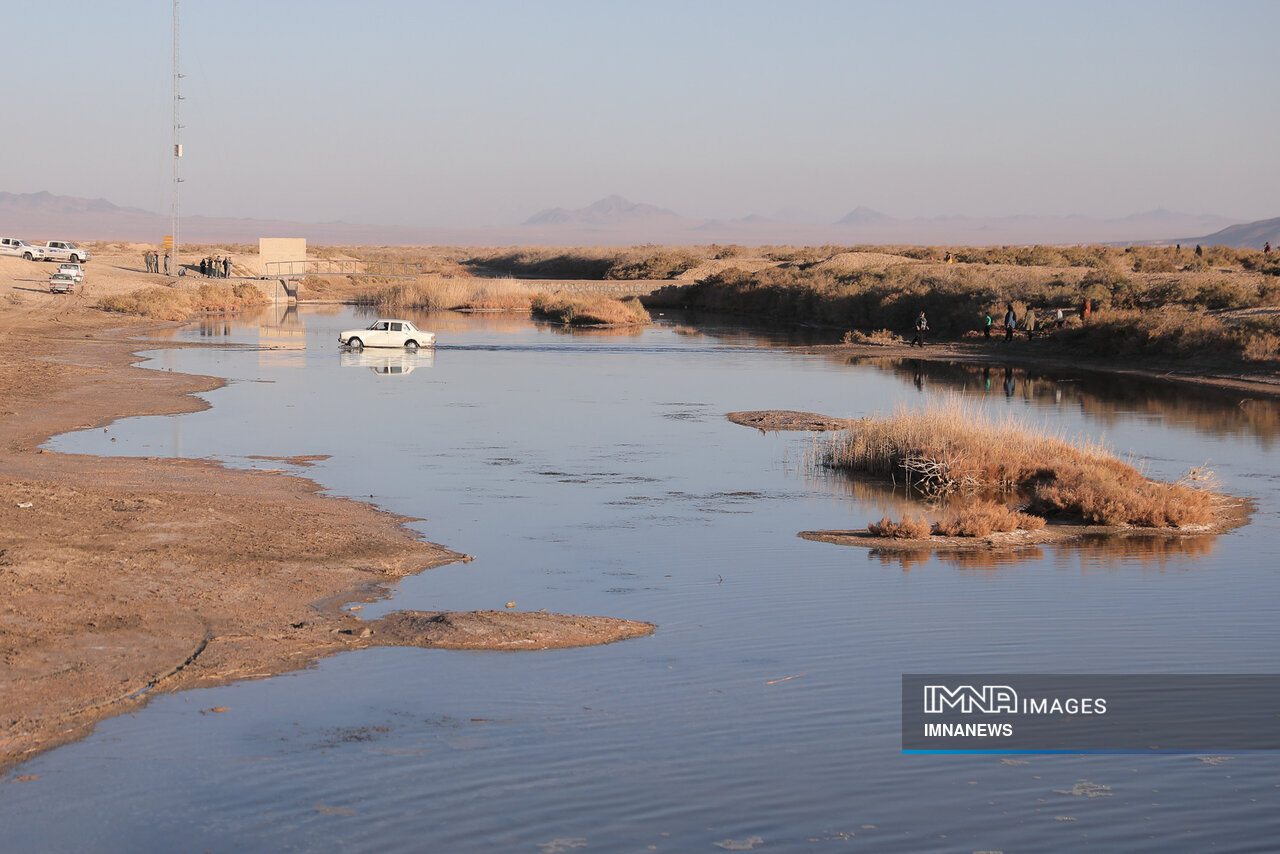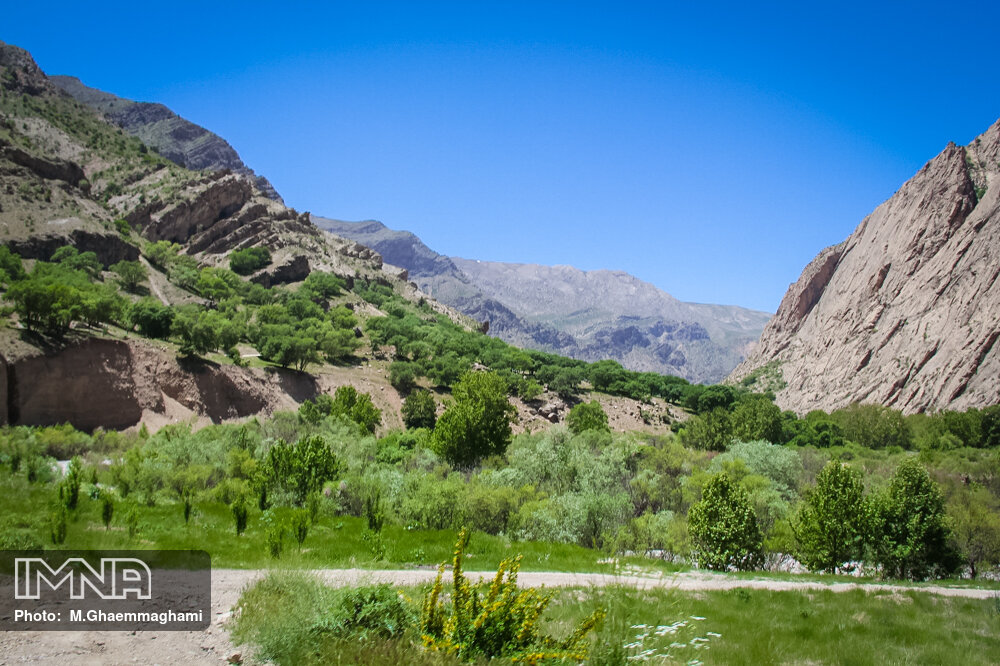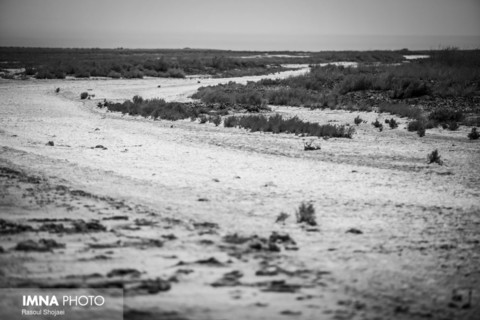Iran (IMNA) - Desertification poses a grave threat to approximately 88 percent of Iran's land, with more than 20 provinces spanning over 29.5 million hectares affected by this alarming phenomenon.
Vahid Jafarian, an official from the Forests, Range, and Watershed Management Organization, emphasized that the lack of financial resources is a significant challenge hindering efforts to combat desertification. However, he also stressed that addressing this issue requires comprehensive planning, aligned policies, and robust legislative support.
Iran's Vegetation Under Threat as Desertification Increases Due to Human Activities and Climate Change
In a recent statement, Jafarian highlighted the alarming decrease in the biological capability and fertility of land, emphasizing the arduous task of restoring it to its original conditions. The primary causes of desertification, according to Jafarian, stem from the overexploitation of underground water resources and the contamination of water due to the release of industrial and agricultural waste into the environment.
Researchers have identified human activities as the driving force behind desertification. Overgrazing of livestock, deforestation, excessive cultivation of farmland, and inadequate irrigation practices are among the activities contributing to this pressing issue.
The situation is further exacerbated by Iran's geographical location in an arid and semi-arid region, making its vegetation increasingly vulnerable to the adverse effects of climate change and the declining precipitation patterns witnessed year after year.

Wind Erosion Threatens Millions of Hectares in Iran, Causing Billions in Annual Losses
Recent studies conducted in 2018 have revealed that approximately 30 million hectares of land in Iran are being affected by wind erosion, with around 14 million hectares classified as critical centers of wind erosion. These centers pose a significant threat to the country's biological and economic resources, warned Jafarian, an expert in the field.
The impact of wind erosion extends beyond agricultural lands, reaching roads, railways, industries, and all other infrastructures within these areas, causing considerable damage.
According to the studies, the annual cost of wind erosion to the quality of life in desert villages is estimated to be at least 30 trillion rials (approximately $100 million).
To preserve the existing conditions, Jafarian emphasized the urgent need for sustainable land management programs and combatting desertification in vulnerable areas. He recommended implementing measures on a yearly basis to address at least one million hectares of these areas, ensuring their long-term protection.
Iran Takes Lead in Reforestation Efforts, Second Only to China
Iran, with 3.8 percent of the world's desert areas, surpasses the global average with 61 percent of its land covered by arid and semi-arid lands, according to recent reports. In response, the country has made significant strides in combatting desertification and dust control for the past 70 years.
Ali Mohammad Tahmasebi, the head of Iran's national working group for mitigating sand and dust storms, disclosed that over 5 million hectares of forests have been planted in sand and dust storm hotspots, particularly in regions receiving less than 50 mm of rainfall. This proactive approach aims to break the force of the wind and stabilize the soil through the introduction of trees and vegetation.
Tahmasebi further highlighted that studies conducted by international organizations indicate that Iran holds the second-highest number of reforested desert areas globally, trailing only behind China. Such efforts demonstrate Iran's commitment to environmental preservation and combating desertification on a large scale.
Iran's Desert Greening Efforts Fall Short of Targets, Forest Loss Continues
Parviz Garshasbi, the deputy head of Iran's Forests, Rangelands, and Watershed Management Organization, revealed that the implementation of desert greening measures outlined in the Sixth National Development Plan (2016-2021) has been inadequate. Despite the plan's goal of greening 1,140,000 hectares of the country's deserts, only 350,000 hectares have been addressed thus far.
Disturbingly, the organization reported an annual loss of approximately 12,000 hectares of forests nationwide between 2015 and 2020. As a result, Iran's forest coverage now stands at 14.3 million hectares.
To combat these challenges, the Forests, Rangelands, and Watershed Management Organization has taken proactive steps by launching two comprehensive plans aimed at mitigating desertification. However, further efforts are needed to address both the current shortfall in desert greening projects and the ongoing loss of precious forested areas.

Iranian Budget Allocates $53 Million for Watershed Management, Quadrupling Previous Year's Funding
In line with the national budget bill for the current Iranian calendar year 1401, which commenced on March 21, the government has allocated a substantial amount of 16 trillion rials (equivalent to approximately $53 million) for watershed management projects. This allocation signifies a significant increase of nearly fourfold compared to the previous year's budget. The funds will be utilized to support various initiatives such as aquifer preservation, flood control measures, desertification prevention, forest development, rangeland rehabilitation, conservation efforts, and other projects aimed at conserving water and soil resources. The primary goals of these projects include safeguarding vegetation, mitigating erosion, and reducing the impacts of drought and nutrition damage on the region.


Your Comment